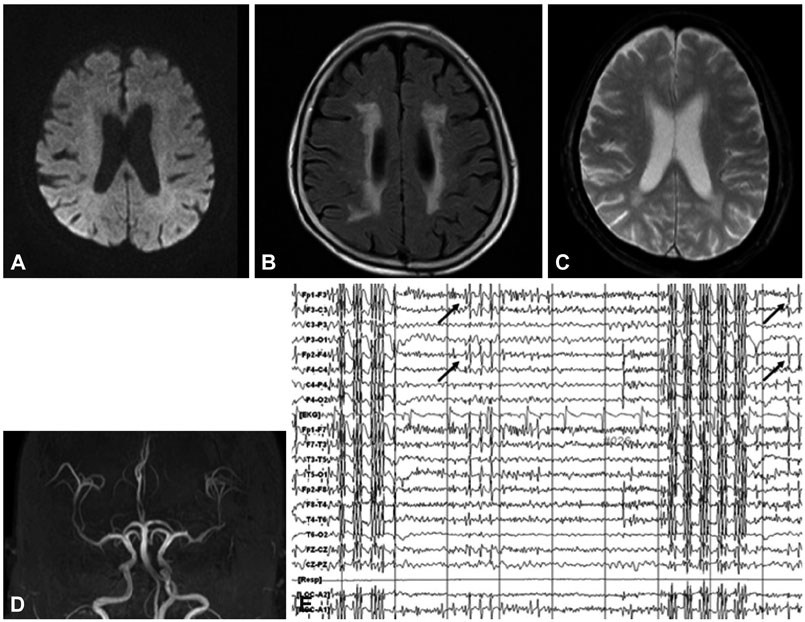J Clin Neurol.
2018 Jan;14(1):100-101. 10.3988/jcn.2018.14.1.100.
Myoclonic Status Epilepticus of Unknown Etiology in an Elderly Patient
- Affiliations
-
- 1Department of Neurology, National Medical Center, Seoul, Korea. crespin97@gmail.com
- KMID: 2399606
- DOI: http://doi.org/10.3988/jcn.2018.14.1.100
Abstract
- No abstract available.
MeSH Terms
Figure
Reference
-
1. Panayiotopoulos CP. A clinical guide to epileptic syndromes and their treatment. 2nd ed. London: Springer;2007. p. 63–64.2. Baysal Kirac L, Aydogdu I, Acarer A, Alpaydin S, Bayam FE, Onbasi H, et al. Myoclonic status epilepticus in six patients without epilepsy. Epilepsy Behav Case Rep. 2012; 1:10–13.
Article3. Bladin CF, Alexandrov AV, Bellavance A, Bornstein N, Chambers B, Coté R, et al. Seizures after stroke: a prospective multicenter study. Arch Neurol. 2000; 57:1617–1622.4. Schreiner A, Pohlmann-Eden B, Schwartz A, Hennerici M. Epileptic seizures in subcortical vascular encephalopathy. J Neurol Sci. 1995; 130:171–177.
Article5. De Reuck J, Nagy E, Van Maele G. Seizures and epilepsy in patients with lacunar strokes. J Neurol Sci. 2007; 263:75–78.
Article
- Full Text Links
- Actions
-
Cited
- CITED
-
- Close
- Share
- Similar articles
-
- Is the Intensive Anticonvulsant Treatment for Control of Acute Posthypoxic Myoclonic Status Epilepticus Necessary?
- A Case of Severe Myoclonic Epilepsy in Infancy
- Myoclonic status epilepticus in hypoxic ischemic encephalopathy which recurred after somatosensory evoked potential testing
- Non-Convulsive Status with Myoclonic-Astatic Epilepsy: A Case Repot
- Sevoflurane for the Management of Refractory Status Epilepticus : A case report


